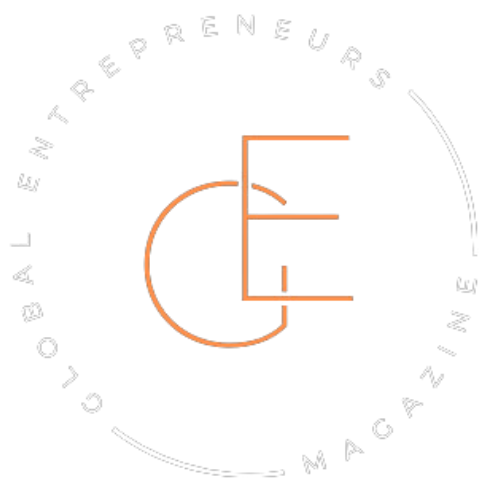Jason had tried everything. Instagram Reels. Facebook Ads. A new scheduling tool that promised to triple his reach. The graphs looked nice, sure. But the needle? It barely moved.
He wasn’t alone. Most entrepreneurs pour time and energy into the flashiest new platforms, hoping for a shortcut to traction. What they don’t realize is that the most powerful tools aren’t always the loudest. They’re often the quiet ones—the ones we’ve used so often, we forget what they’re capable of.
There’s one in particular. It doesn’t make headlines, but it builds relationships in the background. It doesn’t trend, but it drives conversions. And when it’s used right, it can become your most trusted marketing ally.
Let’s talk about the one underrated tech you’re probably underestimating—and how to use it better than 99% of people out there.
The obsession with flashy tools
We’ve all been there—signing up for the latest “game-changing” software because someone on YouTube swore it helped them scale to six figures overnight. There’s a kind of high that comes from installing something new. It feels like momentum. It feels like progress.
But if we’re honest, most of these tools end up collecting digital dust.
Entrepreneurs love complex dashboards. We like to believe that if it looks advanced, it must be effective. Social schedulers with heat maps. Ad platforms with a hundred audience filters. CRMs that feel like they need their own onboarding team.
And still—engagement stays low, leads don’t convert, and we wonder what’s missing.
The truth? Simplicity gets overlooked. We chase the next big thing and forget to ask a more important question: what’s already in our hands that we haven’t used well?
That’s where the shift begins.
The underrated tool: email marketing automation (but not the way you think)
Most people hear “email automation” and think of generic drip campaigns. Discount blasts. Cold funnels. Basically, spam with a schedule.
But that’s not what we’re talking about.
Imagine instead a series of messages that feels more like a journal entry than a pitch. Something that welcomes a new subscriber like a host greets a guest. Not loud. Not pushy. Just honest, helpful, and human.
There’s a reason this works. Email is one of the few spaces left where people still pause. They read. They respond. And unlike a social post that gets buried in hours, a thoughtful email has a shot at staying open on someone’s screen all day.
One entrepreneur built her entire coaching business this way—sharing personal reflections, one small lesson per week. No slick funnels. No flashy videos. Just consistent, intentional connection in people’s inboxes. And it worked. Clients came not because she was everywhere—but because she felt present.
That’s the version of email automation no one’s talking about.
How entrepreneurs are underusing it
Most people treat email automation like a checkbox. One welcome email, a discount code, maybe a follow-up if someone didn’t buy—and that’s it.
It’s not that they’re doing it wrong. It’s that they’re barely doing it at all.
What’s missing is the voice. The story. The intention behind the sequence. Automation doesn’t mean you have to sound automated. But that’s how most emails read—like they were written by someone trying to hit a quota, not build a relationship.
Some founders spend hours crafting Instagram captions with personality, but send emails that sound like legal disclaimers. Others treat their list like a vending machine—press a button, expect a sale.
The ones who win use automation to start a real conversation. They write like they’re speaking to one person, not 10,000. They create emails that people look forward to. Not because of the subject line tricks, but because it actually feels like someone sees them.
That’s the shift. Not just sending emails—using them well.
What it looks like when it’s done right

There’s no need for flashy templates or perfect timing. When email automation is done right, it feels like a thread you actually want to pull.
It might start with a short welcome story—why you started your business, what you believe in, or what someone can expect from you. Not a sales pitch. A handshake.
Then maybe a follow-up a few days later: a behind-the-scenes moment, a lesson from a mistake, or a simple win worth sharing. Something that says, “Hey, I’m still here, and I’ve got something you’ll care about.”
Some business owners even send voice notes—quick, raw, and unpolished. Others embed photos from their notebook or send links to something they read that week. The content doesn’t have to be long. But it has to feel real.
This kind of sequence isn’t designed to convert on Day 1. It’s built to earn trust over time. And oddly enough, that’s why it works better than all the clever sales tricks combined.
Why this works better than you’d expect
Social media feels crowded. You’re competing with everything from dance trends to breaking news. Even your best post can vanish in minutes.
Email’s different.
When someone opens your message, there’s nothing else fighting for attention. No algorithm deciding who sees what. Just your words and their focus. It’s one of the last few digital spaces where people choose to pay attention.
And here’s what most people overlook—email isn’t about volume. It’s about intention. A small list of engaged readers will outperform a massive audience that scrolls past you every time.
Entrepreneurs who treat email like a slow burn—thoughtful, consistent, human—often see better results than those chasing virality. Their messages get opened. Their links get clicked. Their names stay remembered.
Not because they shouted the loudest, but because they showed up the most meaningfully.
How to start without making it complicated
You don’t need a full-blown funnel or ten email variations for every possible user path. Start smaller. Start smarter.
Pick one story. It could be how you started your business. A turning point. A mistake you learned from. Something personal, but useful. Break that story into three or four parts, and turn it into a short sequence.
Space them out a few days apart. Let each one end with something open-ended—a question, a thought, a quiet prompt to reply. Not everything needs a call to action in bold letters. Sometimes just inviting someone to hit “reply” is enough.
There are tools that make this simple. MailerLite. ConvertKit. Flodesk. You don’t need a tech background. You just need a voice—and a little patience to shape the journey.
The goal isn’t to build a funnel. It’s to build a rhythm. One that feels like a real conversation, not a checklist.
Sometimes the best tech is the quiet kind
We love the rush that comes with big launches and fancy dashboards. But more often than not, the real progress comes from tools that don’t scream for attention.
Email won’t impress anyone on a pitch deck. It won’t go viral. But it builds something deeper—a connection that lasts longer than a scroll.
Jason, the entrepreneur from earlier, didn’t grow his audience through ads or hacks. He slowed down, rewrote his emails like letters, and focused on starting conversations instead of closing sales. His list stayed small—but his clients stuck around. And they referred others. Quietly. Consistently.
Sometimes, the smartest move isn’t chasing the next big thing. It’s doubling down on what’s already in front of you—just doing it with more heart.




